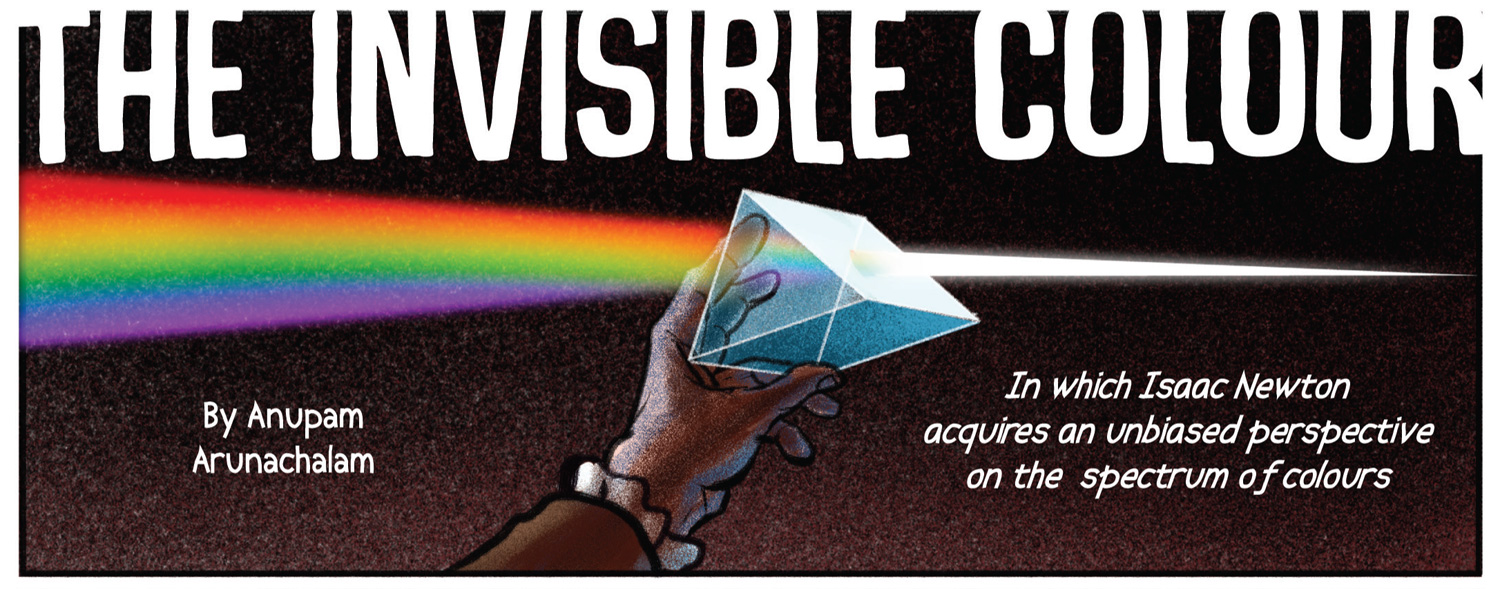
Vol 3 No 4 | Jan-Mar 2024
The Invisible Colour
Story and art by Anupam Arunachalam
Isaac Newton and the science of colours
Sir Isaac Newton was a polymath with a scientific output so prolific, a glance at his achievements is more sizeable than the work of many others put together. His work on optics (the study of light) not only redefined the theories of the ancients, it also set the tone for the study of light after his time.
Like a true polymath, though, his very analytical brain also made room for the occult, which probably explains his obsession with the number seven. Newton’s definition of a ‘spectrum’ of colours that together produce white light led others to probe even more deeply into the subject. These studies, while building on Newton’s strong foundations, also led to the conclusion that how many colours we see is a question of perception.
A prism does not neatly split white light into seven constituent colours. It breaks them into a sequence of constituent colours, moving from one to the other with a seamless transition of intervening shades. The visible spectrum has infinite constituents, all the colours between violet and red that the human eye can perceive (and imagine!)
Split white light at home
Newton’s experiment with white light is easy to recreate at home, either with a prism you can buy at the stationer’s or simply with a glass of water. Here’s how to do it:
A polymath’s mixed legacy
Depending on what your interests are, Newton’s legacy features a lot to love (and a lot to not love as well). The authors share a love of optics, which is why Newton’s work with the light spectrum and the refracting telescope is a cherished memory. But Newton also contributed to calculus, undoubtedly a source of horror to some of our readers. His pioneering work in gravity helped us better understand the solar system, while his laws of motion are the foundation of every child’s education in physics.
For those interested in the occult, there is a wealth of work by (and attributed to) Sir Isaac Newton, from his interpretations of Biblical scripture to his Eurocentric chronology of the world, as well as his interest in alchemy (a favorite Newtonian attribute among Harry Potter fans!)
Here’s astrophysicist Neil DeGrasse Tyson on Sir Isaac Newton:
https://library.si.edu/exhibition/color-in-a-new-light/science
https://www.lib.uchicago.edu/collex/exhibits/originsof-color/color-theory/

